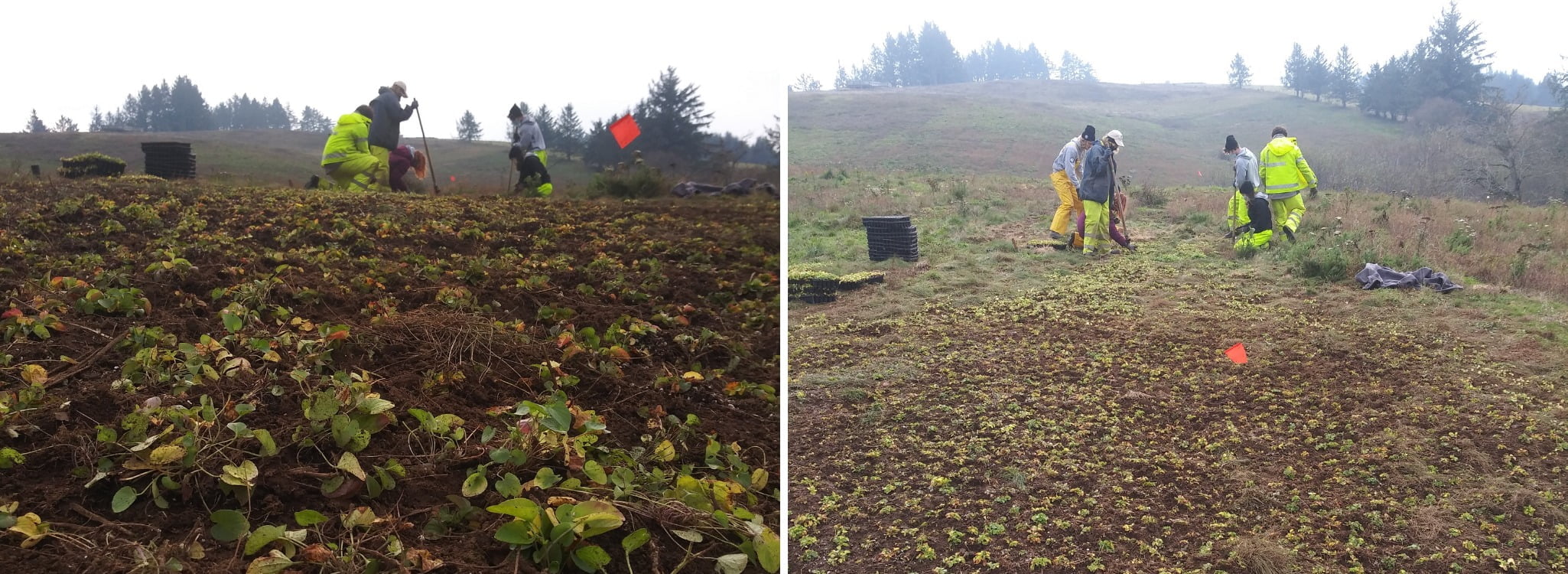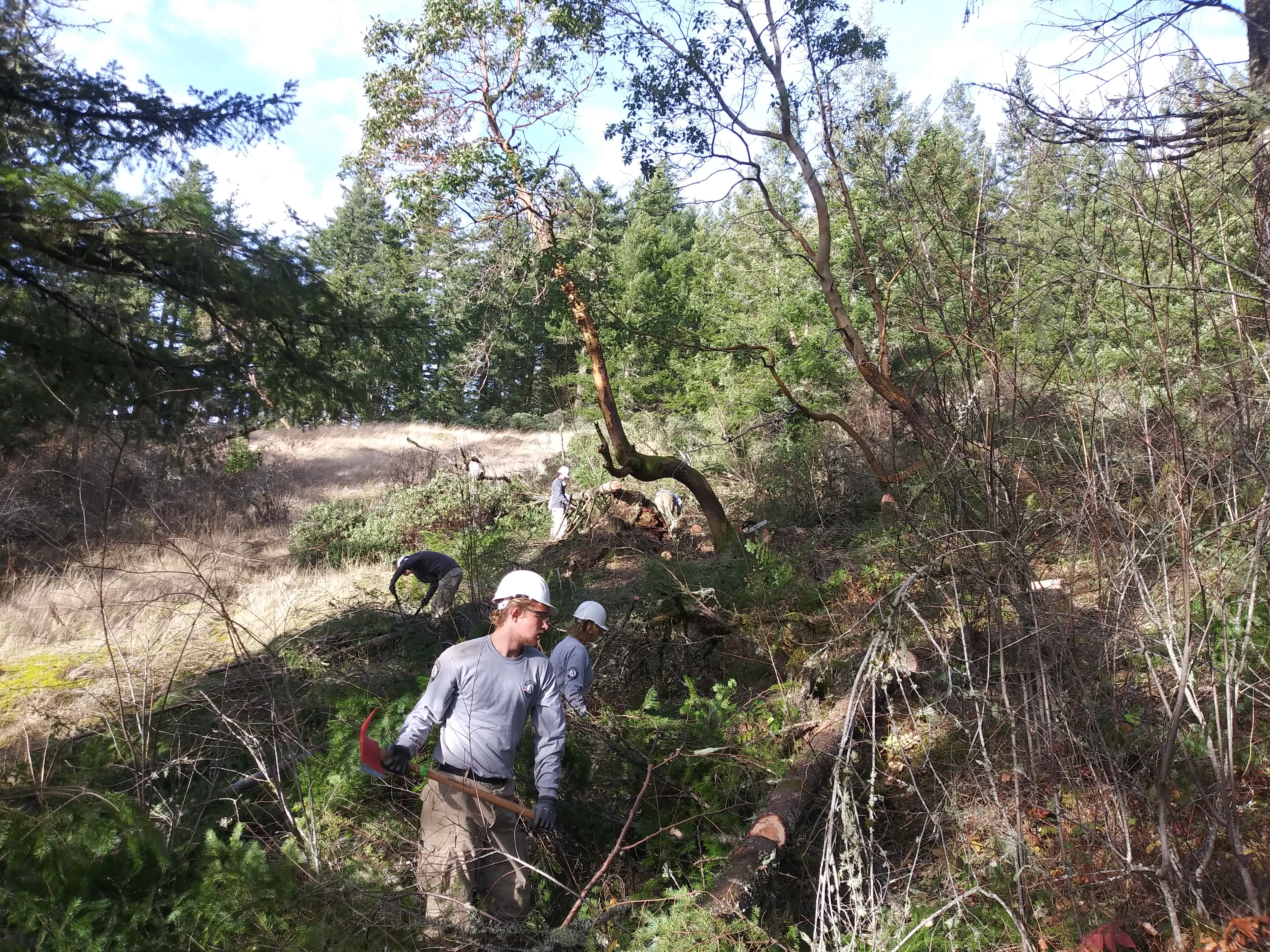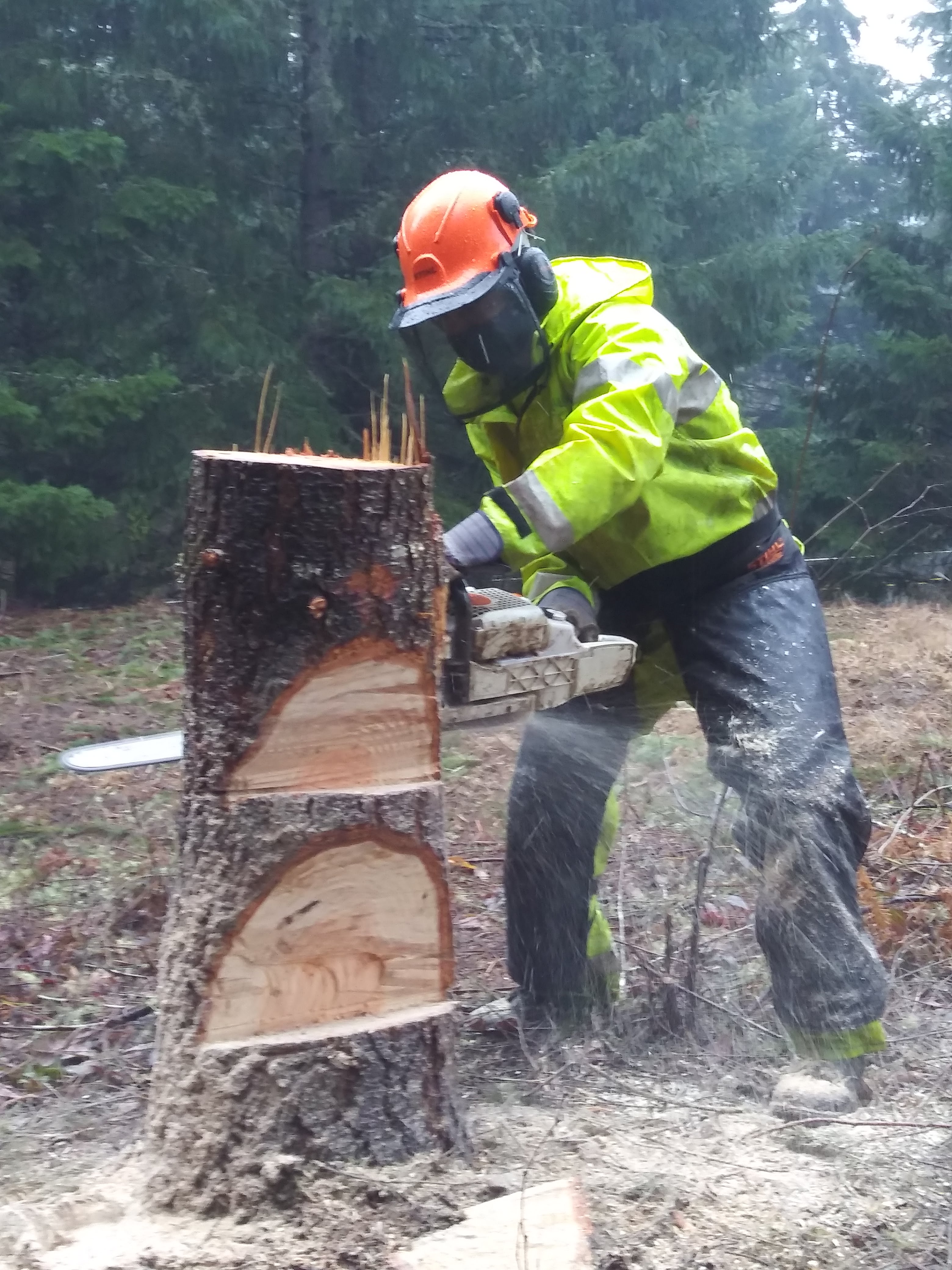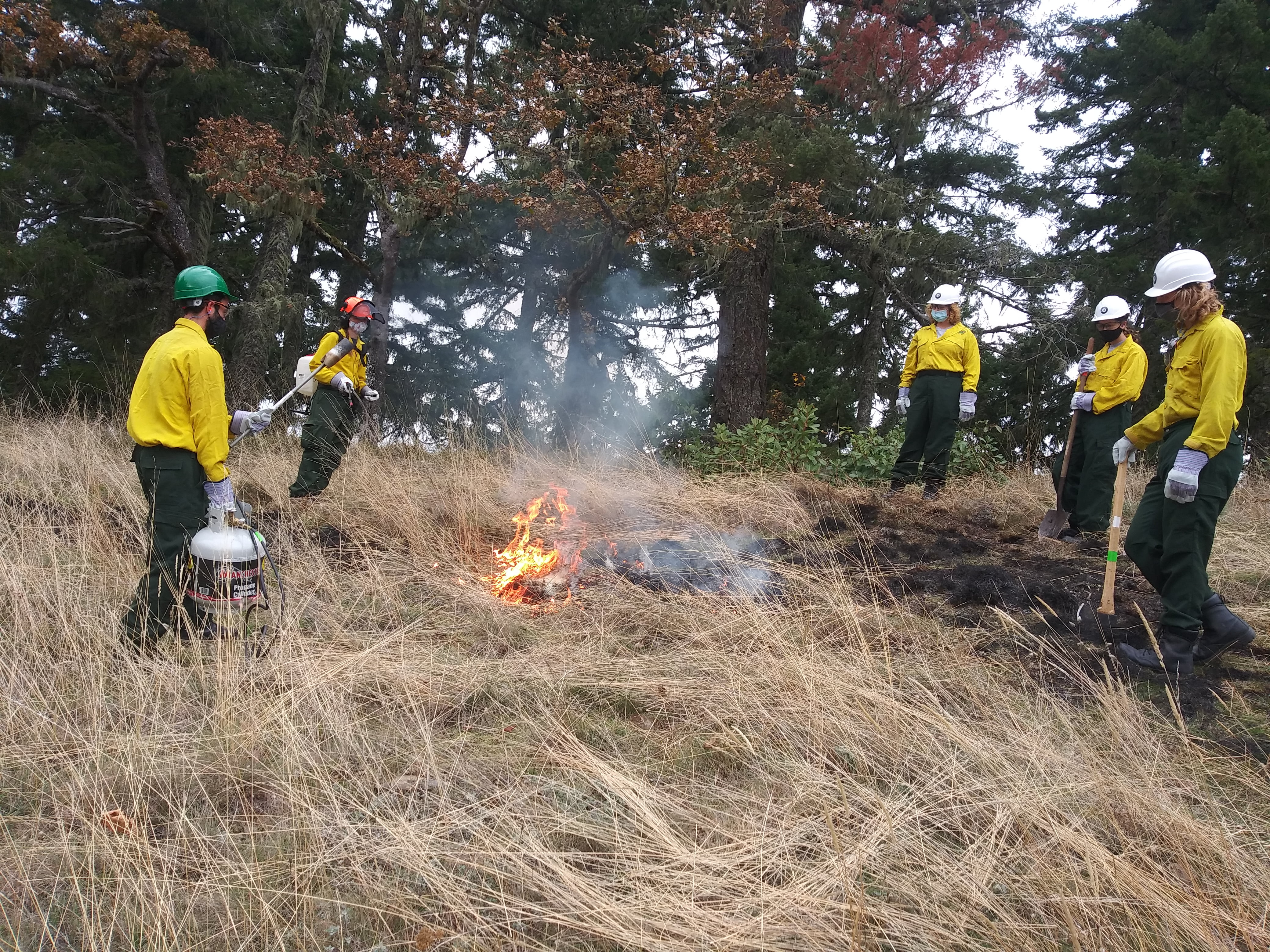
Restoration Destinations: AmeriCorps Blue 4 Meadow Hopping Western Oregon
Many hands make for short work. But, in this strange year of 2020, our restoration team has really missed being able to work with local volunteers. I was able to fill this emotional void by touring around amazing meadows in the Willamette Valley and Oregon coast with Team Blue 4, a volunteer National Civilian Community Corps, or AmeriCorps NCCC, team. The AmeriCorps program engages 18- to 24-year-olds in team-based national and community service in the United States. As the Restoration Technician, I had the distinct pleasure to work in the field with Blue 4 daily throughout the seven weeks IAE hosted them in Corvallis, Oregon. They functioned as a family unit, living and working together, making COVID-19 safety precautions a bit easier to manage for them. Working together we got lots of amazing work done at 11 wonderful locations! BIG shout out to Blue 4 for all the hard work!

The experience gained by Blue 4 volunteering with Institute for Applied Ecology will have some long-lasting effects on the members of the team, much like the long lasting positive effects the team had on the 11 meadows they worked to restore. All of us who love our local meadows and the unique plants, animals and fungi residing within owe a debt of gratitude for the immense amount of work this team has given us. Thank you Blue 4!
Restoration
Research
Education
Get Involved
Contact
Main Office:
4950 SW Hout Street
Corvallis, OR 97333-9598
541-753-3099
[email protected]
Southwest Office:
1202 Parkway Dr. Suite B
Santa Fe, NM 87507
(505) 490-4910
[email protected]
© 2024 Institute for Applied Ecology | Privacy Policy






